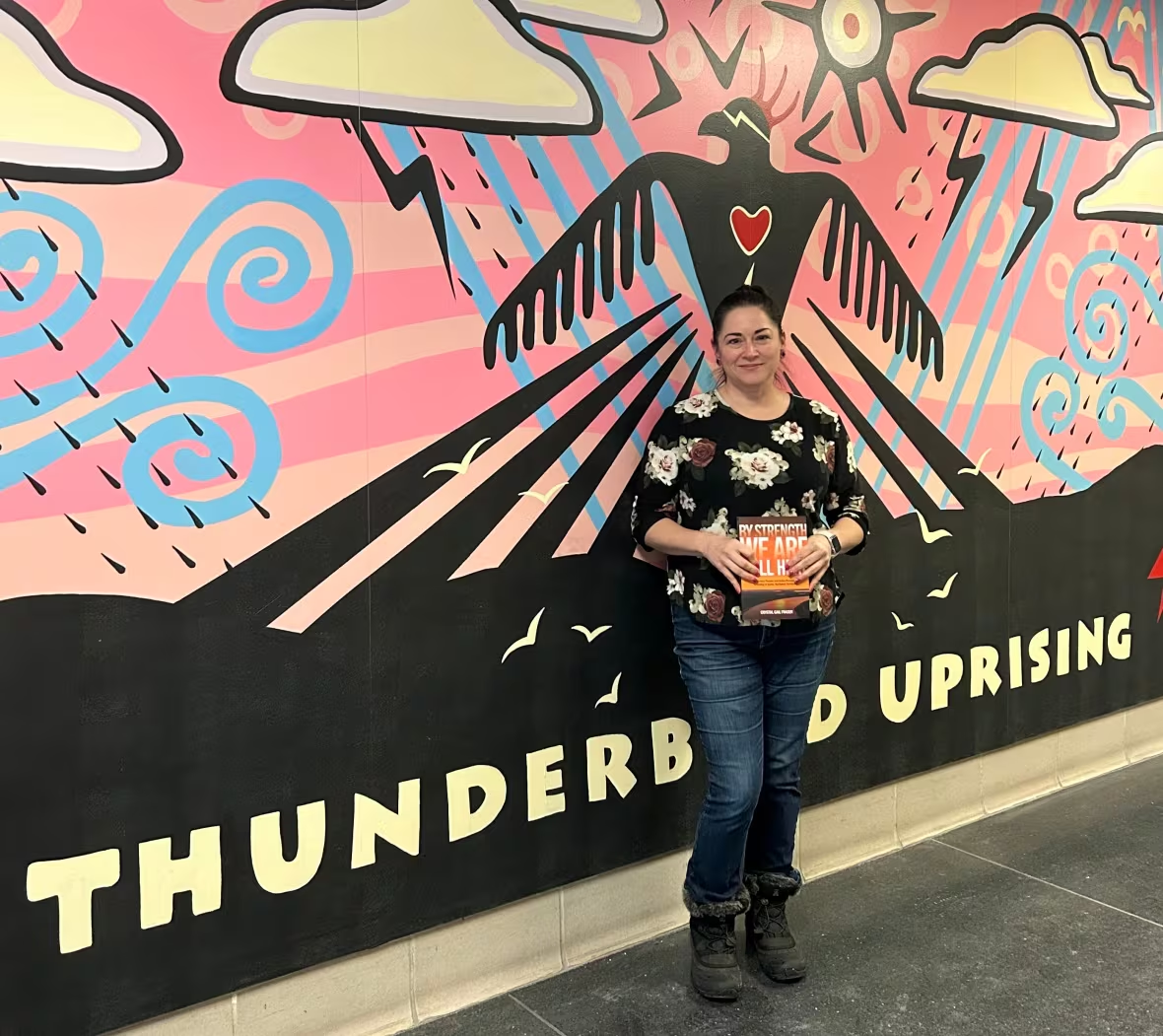New book documents harms — and resistance — at Northern residential schools
Intergenerational survivor sheds light on experiences at Inuvik residential schools

A new book chronicles the experiences of Northern Indigenous people at residential schools with a particular look at Grollier Hall and Stringer Hall in Inuvik, N.W.T.
Crystal Gail Fraser, author of By Strength, We Are Still Here: Indigenous Peoples and Indian Residential Schooling in Inuvik, is Gwichyà Gwich'in and originally from Inuvik.
Fraser, an associate professor in history and Native studies at the University of Alberta in Edmonton, says she hopes the book will help demystify the experiences of survivors and lead to more nation building and sovereignty.
"We are still learning how to live well as people," Fraser said.
Fraser conducted 75 interviews with survivors to help guide her work but the issues of northern residential schools were also personal.
"Having my own mother and my own grandmother go to residential school, but at the time still not really knowing a lot about it, I was a little bit nervous," she said.
"But I also knew that it could really make a difference to understand this in the broader context of our healing."

The issue of Northern peoples' experiences of residential schools has been understudied, Fraser said. She hopes her book will encourage more discussion of the issues affecting survivors.
Fraser will be at Audrey's Books in Edmonton on Jan. 11 for a book launch.
The Truth and Reconciliation Commission issued a report specifically on the Inuit and Northern experience of residential schools in 2015. It said at first the federal government had been uninterested in opening schools in the North because there were limited opportunities for economic development in the region.
"Were it not for the work of Roman Catholic and Anglican missionaries, residential schooling would have no history north of the sixtieth parallel before 1950," the report says.
The report also noted that due to the high percentage of Indigenous Peoples in the North, there is a higher percentage of survivors in the region and it feels the legacy of the schools "strongly."
Fraser said survivors are "still on the healing journey, particularly in the North because Grollier Hall was one of the last institutions to close."
Grollier Hall closed in 1997.
Enduring legacy of schools
Maxine Lacorne, a wellness worker with NU/NT Council of Friendship Centres, recently attended the launch of Fraser's book in Yellowknife.
Having worked with northern survivors for six years, she said they face many barriers on their paths to healing but one of the biggest is a lack of local resources.
The issue is particularly important since travelling for treatment and other services can be retraumatizing for survivors. It requires them to leave their families, communities and support systems — all of which may have happened when they were children forced to attend school, Lacorne said.

"I had one client that it took me two years to get her comfortable and supported enough to take that step into healing," Lacorne said.
Clients often ask why they have to go south to get the services they need as residential school survivors, she said, adding that some have never left the territory before and are also uncertain about how to navigate large airports.
Resistance and resilience
Fraser said it's important to document the harms done by the schools while also recognizing the ways children were able to survive and resist assimilation.
Her book outlines multiple ways that children did this in areas of sports, food, and clothing, even as they faced abuse and other indignities.
One student was able to use the Territorial Experimental Ski Training (TEST) program — a project designed to cultivate "Canadian" qualities in Indigenous children — to ski 60 kilometres to his grandmother's house for a warm drink and a hug, Fraser writes.
She also explains how, even though officials wanted to force Northerners to break with their traditional food sources, schools sometimes had to rely on them to feed students.
Children were allowed to forage for berries and fish, and kids relied on traditional teachings to find food sources, like edible tree bark, to supplement inadequate meals provided by the schools.
"Even though residential schools did a lot of destruction, there was also many ways in which this highly ... developed colonial project just could never really get underway," she said.
While children in the North travelled massive distances from home to get to schools, the remoteness of communities also meant families could hide their kids from officials more easily in some cases, and Fraser notes that Northern residential schools had some of the worst attendance rates.
"They had spent hundreds of millions of dollars to find that families continued to evade the system and in some cases, there was like absolutely nothing that they could do about it," she said.

Lacorne said more funding than is currently offered is needed to promote reconciliation.
She said federal programs like the Indian Residential Schools Resolution Health Support Program (IRS RHSP), which offers cultural and emotional support as well as mental health counselling services to survivors and their families, are chronically underfunded.
The IRS RHSP was part of the Indian Residential Schools Settlement Agreement in 2006. Thousands of survivors and their families regularly access the program but it still hasn't received permanent funding.
"We definitely need continued long-term funding," she said.
A national Indian Residential School Crisis Line is available to provide support for survivors and those affected. People can access emotional and crisis referral services by calling the 24-hour service at 1-866-925-4419.
Mental health counselling and crisis support are also available 24 hours a day, seven days a week through the Hope for Wellness hotline at 1-855-242-3310 or by online chat.

